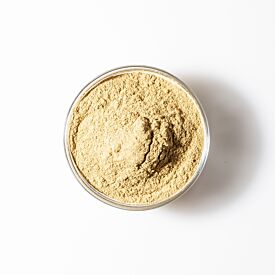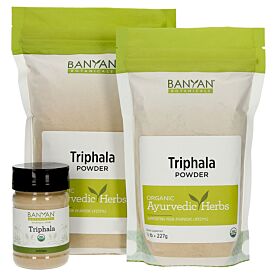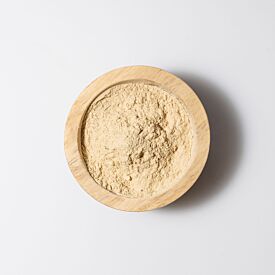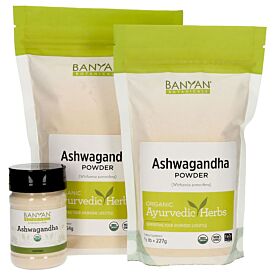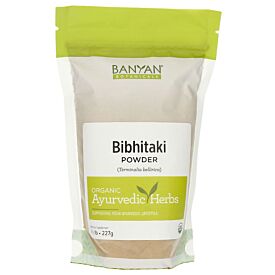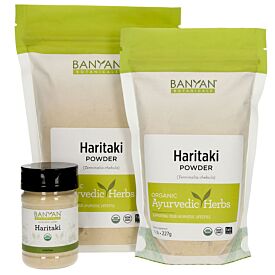Autumn Rejuvenation for Vata-Kapha and Kapha-Vata

As a vata-kapha or kapha-vata type, the fall and winter months are a particularly wonderful time for you to consider a rejuvenation program. The practices involved are very supportive at this time of year because they provide a sense of grounding, nourishment, and calm as we move into vata season and also help to optimize your health before kapha season arrives this winter and spring.
For those of you who recently completed (or intend to complete) a cleanse, rejuvenation is the final component of the cleanse itself. After working so hard to purify and reset your physiology, you are prepared for deep nourishment on all levels.
And even if you did not do a fall cleanse, rejuvenation alone can strengthen and tone your physical, mental, and emotional spheres.
In this Article:
Planning Your Rejuvenation
As with many things in Ayurveda, the length of an appropriate rejuvenation program varies from one person to the next. Rejuvenation therapies are typically implemented for a set period of time—usually at least one month, and for up to three months.
While this may strike you as a long time, keep in mind that rejuvenation should feel nourishing and enjoyable to you. And it can really be as simple as adding one practice or one herb to your daily routine.
Based on Cleansing
If you completed a full seven-day cleanse, your body will benefit from a longer period of rejuvenation (about a month), starting as soon after you complete your cleanse as possible. If that timeframe feels overwhelming to you, commit to at least one month of rejuvenation.
If you completed a three-day cleanse, be sure to do at least two weeks of rejuvenation. If your cleanse was 15 days, you can rejuvenate for six weeks.
Even if you did not complete a cleanse at all, vata-kapha or kapha-vata types normally benefit from a longer period of rejuvenation—about three months, which is the recommended period of rejuvenation for those who are finishing a 21-day cleanse. However, there may be some instances where this would not be appropriate.
To learn more about planning a rejuvenation program as part of a cleanse, visit this resource on planning a traditional Ayurvedic cleanse.
Based on Your State of Balance
If you have signs of a kapha imbalance (especially if they are of greater concern than any signs of imbalanced pitta or imbalanced vata you may have), you’ll want to go easy on rejuvenation so as not to further aggravate kapha.
Similarly, if you have a lot of toxicity in your system, which can be identified by a thick coating on the tongue, you’ll want to keep your rejuvenation routine very simple so that you don’t inadvertently nourish the toxins.
In either case, a simple rejuvenation program (of one to three therapies) for about a month is probably sufficient—and it might be helpful to think about choosing therapies because they are seasonally appropriate and vata-pacifying rather than focusing on their rejuvenative properties.
You could also favor kapha-type rejuvenatives, which are lighter and less likely to aggravate either of the above conditions.
Selecting Your Rejuvenatives
What follows is a list of many possible rejuvenative therapies. Please don’t feel overwhelmed. The idea is not to do all of these things, but to pick and choose those recipes and practices that most resonate with you.
As you consider each therapy, remember that your rejuvenation process needs to feel beneficial. It should not add stress to your life but should instead add a sense of groundedness, contentment, and joy.
If several possibilities pique your interest, consider starting with one to three therapies and then gradually expand your repertoire of rejuvenatives only if and when it feels appropriate.
Dietary Rejuvenatives
As a vata-kapha or kapha-vata type, your focus should be on eating a healthy and balanced vata-pacifying diet. You can complement these broad strokes with some especially rejuvenative foods:
- Soaked Almonds and Cashews. Soaked almonds are very grounding, nourishing, and energizing. Soaking and peeling them makes them more digestible and more beneficial to the body. Cashews—which are oily, nutritive, and building, share many qualities with soaked almonds, including the fact that soaking them makes them more digestible.
- Almond Milk. Rejuvenative almond milk is another delicious way to ingest soaked and peeled almonds. You can cook with it or drink it plain. It is especially useful in fall and winter, or after a period of major exertion.
- Dates. Warm, nourishing, and deliciously sweet, dates are a great breakfast or snack choice during rejuvenation. Consider making a date and almond shake or date balls with them.
- Dark Grapes, Plums, and Peaches. These fruits are especially rejuvenative for kapha and will be a good addition to your rejuvenation program, especially if you’re particularly prone to kapha imbalances.
- Urad Dal. Urad dal is a legume soup that detoxifies the system and nourishes the muscle, bone, and reproductive fluids while energizing the whole body.

Rejuvenative Herbs
There are many different types of rejuvenating Ayurvedic herbs—each with a distinct purpose. The most widely used herbs for rejuvenation work simultaneously on all the body’s tissues.
Below are several herbal rejuvenatives well-suited for balancing vata, especially during fall and winter. Taking these herbs and formulas with an anupan (carrier substance) such as ghee, honey, or ginger tea helps deliver the benefits deep into the tissues, increasing the potency and efficacy of the herbs.
Instructions for using each of these specifically as a rejuvenative are provided, but if you prefer to take your herbs in water, or without ghee and honey, they will still be beneficial.
Triphala with Ghee and Honey
Triphala is a tridoshic formula that naturally rejuvenates all the tissues in the body while encouraging the elimination of toxins. It is an especially potent rejuvenative when taken with ghee and honey—usually first thing in the morning.
Mix ½ teaspoon of Triphala powder with ½ teaspoon of ghee and ½ teaspoon of raw honey. Or, if powdered herbs aren’t your thing, take one Triphala tablet, followed by a mixture of ½ teaspoon ghee and ½ teaspoon raw honey.
Choose One: Healthy Vata, Healthy Pitta, or Healthy Kapha Tablets
Healthy Vata Tablets
Healthy Vata is a rejuvenating blend of herbs specifically formulated to restore and maintain balanced vata without aggravating pitta or kapha. The herbs in this formula promote energy and vitality while supporting overall health and well-being. It is an excellent formula for the autumn and winter seasons when dry, cold, and windy conditions tend to disturb vata.
Healthy Pitta Tablets
Even though it is vata season now, if summer’s heat tends to linger in your system and/or you have been plagued by pitta imbalances and are less disturbed by vata imbalances, Healthy Pitta may be more appropriate for you. This cooling rejuvenative formula is designed to restore and maintain balanced pitta, without aggravating vata or kapha. In particular, Healthy Pitta supports a calm mind, soothes fiery emotions, and promotes a cooler, more balanced temperament.
Healthy Kapha Tablets
Healthy Kapha is a warming, astringent formula designed to restore and maintain balanced kapha without aggravating vata or pitta. In particular, Healthy Kapha supports a clear respiratory system, a robust immune system, and helps support the maintenance of a healthy weight. If you are doing a longer rejuvenation program, you might consider switching from Healthy Vata to Healthy Kapha in the winter or spring—whenever the cool, wet weather begins to make balancing kapha a higher priority.
Chyavanprash
Chyavanprash is a delicious nutritive jam. It is an ancient herbal formula containing both ghee and honey—which both help deliver the herbs to the tissues. Chyavanprash can be taken alone, it can be stirred into milk or water, or it can be spread on toast, bread, or crackers—like any other jam.
Taking chyavanprash in warm milk (or almond milk, if dairy is not appropriate) helps carry its tonifying and rejuvenating qualities deep into the tissues. 1 As a rejuvenative, Chyavanprash is typically taken in the morning, or sometimes in both the morning and the evening.
Ashwagandha
Ashwagandha is a highly esteemed herb aimed at improving strength, energy, and vitality. It improves one’s ability to handle stress, promotes physical strength, rejuvenates the tissues (especially the muscles, bones, joints, and the nervous system), and it supports sound sleep at night.
As a rejuvenative, you would typically take ½ teaspoon Ashwagandha powder in the morning, in ½ teaspoon Ghee and ½ teaspoon raw honey. Or, if you would prefer a tablet, take one Ashwagandha tablet, followed by a mixture of ½ teaspoon Ghee and ½ teaspoon raw honey.
Haritaki
Haritaki is one of three ingredients in the famous Ayurvedic formula, triphala, but it is particularly suited to calm vata. If your primary imbalance relates to vata, you could use haritaki instead of triphala, but in a similar manner.
Bibhitaki
Bibhitaki is another ingredient in triphala, and is particularly calming to kapha. If your primary imbalance relates to kapha, you could use bibhitaki in place of triphala.
Choose One: Vata Digest, Pitta Digest, or Kapha Digest
Vata Digest
Vata Digest tablets are heating, grounding, and oily, and are incredibly supportive of proper digestion in vata-types. Whether you’re in the rejuvenation phase following a cleanse (when your digestive fire requires a little boost) or you’re simply trying to redirect your body’s tendency toward vata-type digestive imbalances, this formula is fabulous.
Pitta Digest
Pitta Digest is designed to cool and soothe the digestive tract and to promote healthy digestion in those who tend toward pitta-type digestive issues. Remember that effective rejuvenation relies on proper digestion.
Kapha Digest
Kapha Digest is designed to kindle a strong digestive fire while burning away fat and natural toxins. It is particularly useful for those who tend toward kapha-type digestive imbalances. This formula simultaneously rejuvenates the lungs and supports clear and healthy respiratory channels.
Rejuvenating Practices
Not surprisingly, your lifestyle has a profound impact on your body’s ability to repair, regenerate, and revitalize itself. When we fill our days—particularly our mornings—with calming, nurturing practices that set a tone of health, relaxation, and self-love, our bodies are much better able to nurture the rejuvenation process.
Simple Lifestyle Adjustments to Support Rejuvenation
- Minimize stress
- Minimize travel
- Maintain positive relationships
- Avoid unfamiliar places or situations that might incite anxiety, fear, or loneliness
- Wear warm clothes through the colder months, and take care to cover your head and ears when outdoors
- Undertake a period of celibacy to preserve your life force
In addition to any of the above commitments that appeal to you, you can incorporate some more formal practices to invite rejuvenation on a very deep level.
Abhyanga (Ayurvedic Oil Massage)
Each morning, before a shower or bath, massage about ¼ cup warm Vata Massage Oil, Kapha Massage Oil, or Organic Sesame Oil. A daily oil massage calms, lubricates, and rejuvenates the tissues—in particular, the nervous system. For further instructions on this rejuvenating technique, click here.
Oil Your Scalp and Feet Before Sleep
Before bed, apply some warm Vata Massage Oil or Organic Sesame Oil to your scalp and to the soles of your feet. This practice grounds the energy, soothes the nervous system, reduces stress, and quiets the mind—all of which support sound sleep. Remember that sleep is one of the body’s most essential avenues of rejuvenation.
Nasya
Each morning (or at least several times per week) apply three to five drops of Nasya Oil into each nostril. This practice helps soothe the nasal passages while promoting unobstructed breathing, relieving accumulated stress, supporting mental clarity, and fostering the unfolding of awareness.
Yoga
Vata-pacifying yoga, which is very gentle, grounding, and nourishing, is the best practice for you this season, especially if you are undertaking a period of rejuvenation. Restorative postures such as Legs Up the Wall, and Savasana are particularly beneficial when it comes to rejuvenation.
Meditation, Pranayama, Quiet Time, or Reflective Time
Any quiet, contemplative practice—even if it is only five to fifteen minutes in duration—is incredibly rejuvenative to the mind and physiology. Practicing in the early morning hours, especially before and around dawn, is powerfully supportive of rejuvenation.



